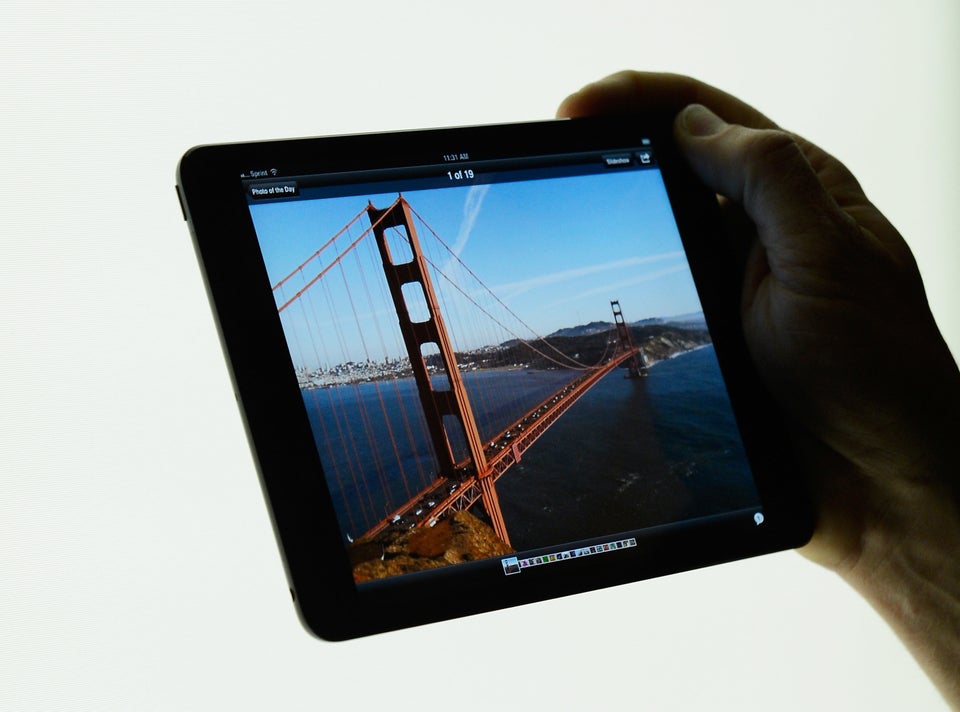Apple's iPad mini costs $130 more than the two other best handheld tablets on the market of similar size, Amazon's Kindle Fire HD and Barnes & Noble's NOOK HD. And while the price difference between iPad mini ($329) and Kindle Fire HD/NOOK HD ($199) is crystal clear, the justification for said price difference is, I am afraid, quite blurry.
Apple outed its iPad mini at an event on Tuesday afternoon, adding another high-quality device to an already-crowded 7-inch tablet market. The iPad mini is fast, well-built, and features hundreds of thousands apps from Apple's excellent App Store.
If you're shopping for a handheld tablet, you now have to decide between this new iPad mini, the Kindle Fire HD, the NOOK HD, the Nexus 7, and the "old" 2011 Kindle Fire, the price of which has been reduced to a tantalizing $159. Indeed, it is a packed field: It's like the 2012 Republican primaries all over again, except, unlike the GOP candidates, all of these tablets computers can count to three.
As you begin to shop, the first number that's going to differentiate these tablets for you, I would think, is price: The iPad mini starts at $329, compared to $199 for the brand new NOOK HD, Kindle Fire HD and Google Nexus 7. That's a $130 difference, a lot of money for those of us who don't own horses competing in Olympic dressage.
The second thing you might notice -- or, that you do notice, if you're a numbers nerd like I am -- is screen resolution and pixel density. Without getting too geeky on you, the NOOK HD and Kindle Fire HD feature much, much crisper screens than the iPad mini. For those that care: The iPad mini has a resolution of 1024x780, with 163 pixels-per-inch; the Kindle Fire HD has a 1280x800 resolution, with 216 pixels-per-inch; and the NOOK HD has a 1440x900 resolution, with 243 pixels-per-inch. In this case, higher is better, lower is worse; Apple's screen doesn't stack up, and it comes affixed to a device that is $130 more expensive than the competition.
As many gadget reviewers noted when the iPad 3 with Retina display came out, going from the iPad 3 back to the iPad 2 is like switching from HDTV to a non-HD feed. You're spoiled by the extra resolution, and the supreme density of pixels, and when you switch back and forth between a Retina and non-Retina device, the difference is noticeable. The non-Retina device seems downright blurry or fuzzy compared to the Retina device.
It seems likely that this will again be the case -- only, this time, Apple has the non-Retina device, and its competitors own the Retina device. For the first time in more than a year, Apple's flagship gadget at a press event did not include a Retina display ("Retina," by the way, is a branding term Apple uses to signify a display whose individual pixels cannot be made out by the human eye at a certain distance; basically, it denotes a super high-definition screen). Its most fierce competitors, meanwhile, do have excellent, high-definition displays, which are "Retina" by Apple's definition.
On a tablet device that is made for reading text, and watching movies, and visiting websites, this seems like a fairly major advantage for a company to have. And, again, for the first time in awhile, that advantage belongs to a company that is not Apple.
For about a year now, Apple has been touting the importance of display quality on all devices. The iPad 3 had a "resolutionary" Retina display, with the "best mobile display ever." The MacBook Pro with Retina display features a screen that is "millions of pixels ahead of its time ... a display worthy of the world's most advanced notebook." The iPhone 5, Apple bragged, "has a pixel density so high your eye can’t distinguish individual pixels," a display even more "stunning" than that on the iPhone 4S (which was, of course, its most stunning display before then).
At the Apple event, Marketing VP Phil Schiller compared the iPad mini to a Nexus 7 onstage with a side-by-side comparison. For the unveiling of any other iDevice from the past year, this would have been the time that Apple could trumpet the supremacy of its display; instead, Schiller bragged that the iPad mini had thinner device bezels than comparable Android tablets.
Device bezels? Something tells me that execs from Amazon, Barnes & Noble, and Google are more than happy to admit defeat on bezel width in return for a victory on overall display quality.
Still, the iPad mini has many numbers working in its favor: Its 275,000 tablet-optimized apps are the most by far for any slate computer; it's 7.9-inch screen gives content more room to breathe; its weight compares favorably to its competitors, easily besting the Nexus 7 and Kindle Fire HD and barely edging out the new NOOK. From initial reactions, the quality of materials used to build the iPad mini, too, far outpaces those on the plastic-and-rubber construction of other seven-inch tablets.
Where the numbers don't favor Apple, however, are on price and screen quality. Handheld tablet buyers might want to look twice before focusing on the iPad mini.
CORRECTION: A previous version of this story used the word "bevel" instead of "bezel."
